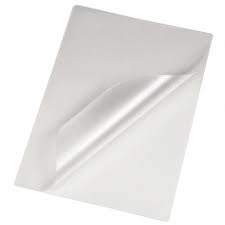Lamination Film Selection

Lamination, whose roots are based on the word “lamina” used in Latin, literally means layer and layer. This reinforcement is made by laminating the product with lamination film. Lamination, on the other hand, is making the product as strong as possible before it is delivered to the end user. Thus, the efficiency maximize. In other words, a product becomes more robust, durable, and modern before it delivers to the end-user.
Although lamination is used very actively in many sectors, the most used sectors are textile, printing and packaging. A laminated product not only becomes much more durable and robust but also gains a more modern look.
Many different materials are transformed into a single material with various advanced techniques such as heat and press during the lamination process. After this process, the product becomes layered within itself. Since these layers come together in a way that they cannot be separated by lamination, when the process is finished, the product becomes like a single layer. Each layer makes the product more durable. In addition, a much more modern appearance emerges compared to the first version of the product.
How is Lamination Made?
 The lamination process varies according to the product or material to be made. The lamination method used in each sector may be different from the others. On the other hand, the expected result from the operation is the same. The main purpose in lamination is to add more quality. Regardless of the industry, lamination makes the product more durable. Moreover, it modernizes the image.
The lamination process varies according to the product or material to be made. The lamination method used in each sector may be different from the others. On the other hand, the expected result from the operation is the same. The main purpose in lamination is to add more quality. Regardless of the industry, lamination makes the product more durable. Moreover, it modernizes the image.
During the lamination process, the main product or material can sometimes be in the middle, sometimes at the top, and sometimes at the bottom. The number of layers to be used during rendering may vary. Some laminations can be done with just one layer separate from the primary material. Some operations are completed by combining multiple layers.
The methods used while laminating may also vary, either as coating or joining. These variations are entirely sector, product, and material based. The lamination method to be used for one product may not be suitable for another product. For this reason, the lamination process to be performed in the case of different products is not standard.
In lamination processes made with the joining method, materials are similar and have the feature of supporting each other’s use. These materials must be the same as each other in terms of size. Adhesive, intense heat and fusing can use to join materials. Then, these materials are converted into a single material with the help of a powerful press machine. Coating, another method, is done by covering the main product with materials different from itself. In this process, intense heat usually uses, and the base material is in the middle layer. The materials in the lower and upper layers may differ from each other.
Lamination Film Varieties
 Lamination films are generally preferred in the printing industry. Its types are matte, semi-gloss, and glossy. There are also varieties according to their sizes. A3 lamination film is a lamination film of larger size. In contrast, A4 lamination film is the size of a standard A4 paper. Different from these two most used sizes, there are some sizes according to the purpose of use.
Lamination films are generally preferred in the printing industry. Its types are matte, semi-gloss, and glossy. There are also varieties according to their sizes. A3 lamination film is a lamination film of larger size. In contrast, A4 lamination film is the size of a standard A4 paper. Different from these two most used sizes, there are some sizes according to the purpose of use.
Each lamination film has its different features. Some give the product a softer but solid texture, while others add scratch resistance and hardness. The material to be applied is of great importance when choosing the lamination film. The type of reinforcement required by the material to be applied is determined. Then, different lamination film selections can be made according to the desired performance of the product. Glossy lamination films make text more legible. On the other hand, matte lamination films are mainly used in products such as magazines.


